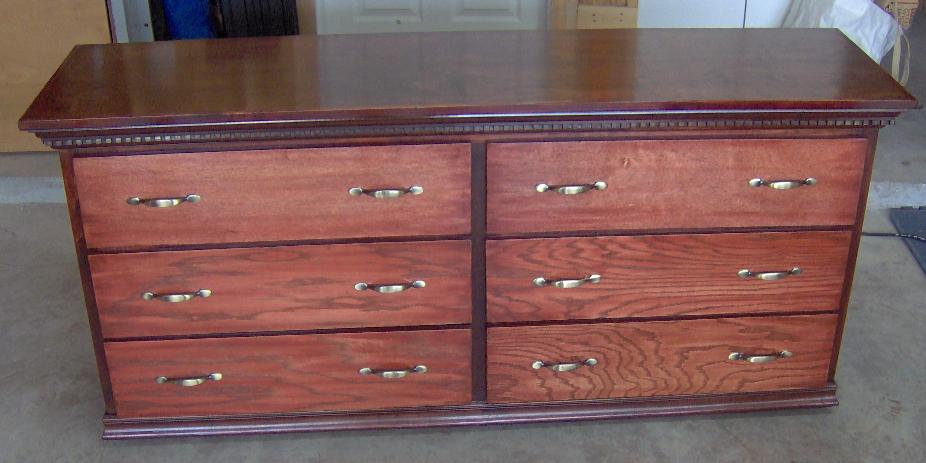In between each row of drawers is the rail that they rest on. In traditional solid wood construction, that rail is actually a frame, rather than a solid board shelf. The reasons were that using a solid wood shelf between each row of drawers make a piece of furniture heavy, more expensive, and then you have to allow for a lot more wood movement in your casework and back boards. So rather than use a solid board shelf, cabinets of this sort use a frame. A light-weight panel inside the frame gives it some rigidity, and also stops the contents of the drawer below from interfering with the drawer above, while also keeping out any dust between the drawers. Hence, the dust panel.
Not as common in contemporary furniture, where ply and MDF are both very cheap and very stable. Here is an example of a plywood dresser I made my wife about 18 years ago. It uses a face frame and drawer runners. If there was a panel in-between each drawer, that would be the dust panel.



I've got some work to do to get to the dust panels for this guy. Mostly, I need to finish shaping all the boxes, get the bottoms in them, glue them square, and flush sand the joints first. Then I will make the face frames and size them to the case. Once that is done, I will turn the rails of the face frames into dust panels. That part will actually be pretty easy and fast, but the all those other things before it are tedious. Going to put some time into the boxes this weekend.

